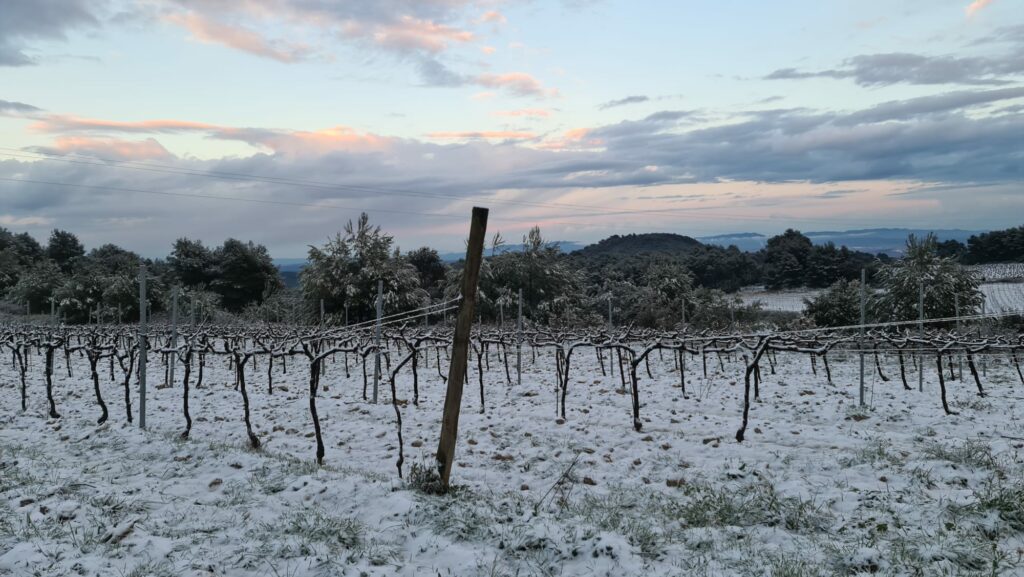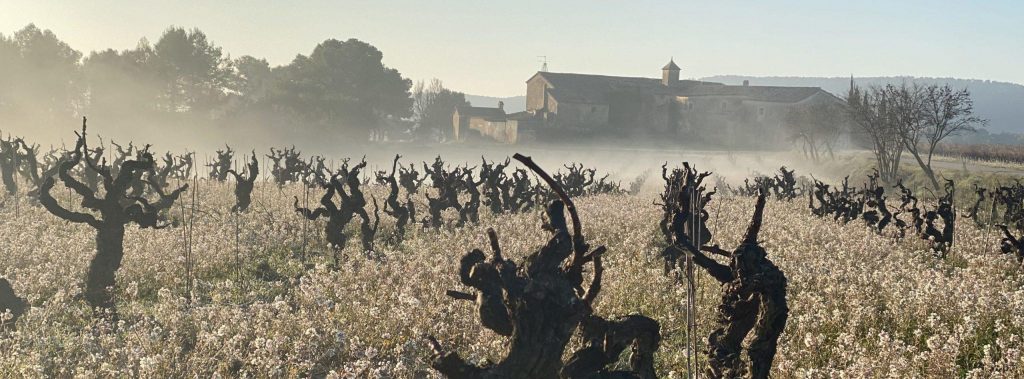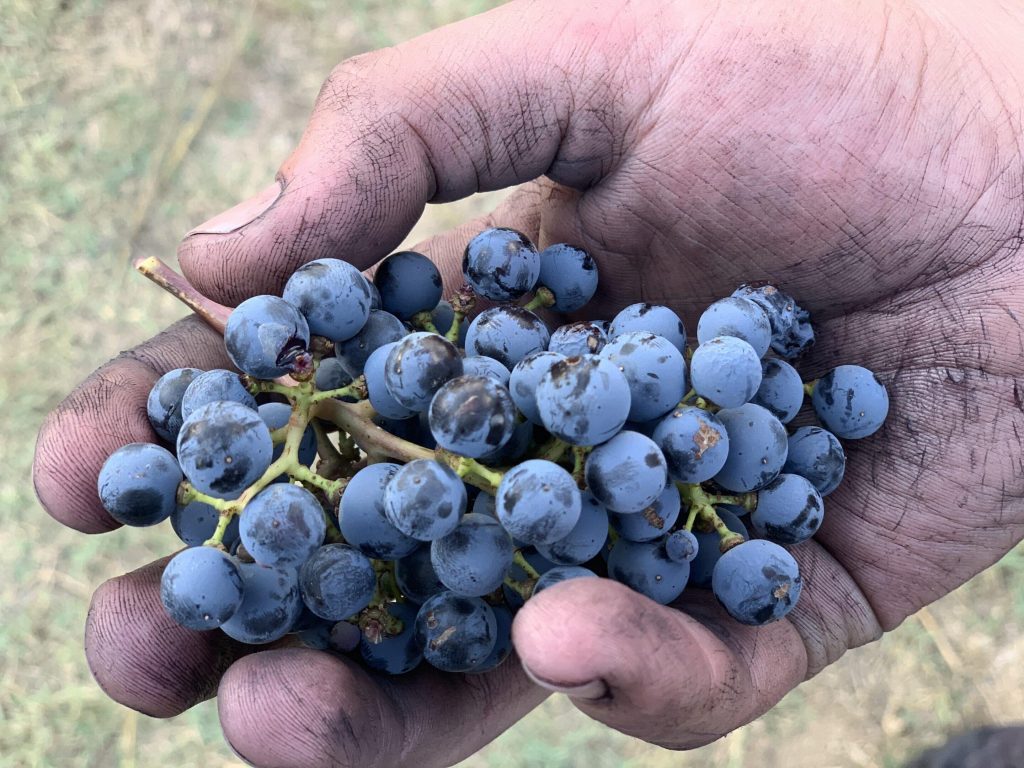The vine cycle begins in October – with the vegetative stop and the dormant period – and ends in September of the following year – after the grape harvest.
Let’s put ourselves in the picture:
We were coming off the last 2 warmest and driest years we could remember, and still not recovered from the dry years 2015 and 2017. The vines suffered from the accumulated hydric stress, which is more difficult to combat year after year.
The Autumn of 2022 arrived, the warmest of all the recorded until then, even more than the also very warm years of 2014, 2011 and 2006. In addition, it was also the driest autumn in our region (Penedès) since the start of the records, with an average of 40 liters throughout autumn.
In the winter of 22-23 we suffered high temperature record unusual for the given time of the year: in the second half of December, we reached the maximum temperatures of 21.5 degrees and in January and February, persistent and intense cold weather that counteracted the high temperature of December in the seasonal balance. Between the 26th and 28th of February, very low temperatures with a snow level that dropped to 600 meters leaving our vineyards sprinkled with snow at Finca Les Torres-Les Valls, in Pontons.

The spring also surpassed temperature record; being the warmest spring in the century series reaching 25 degrees on March 10. Followed by a generalized pluviometry deficit, reaching 60 days in a row without rain. A very dramatic scene.
Following the trend, the summer was also one of the warmest in the last 75 years, behind the exceptional years of 2022 and 2003. We reached the peak heat on July 18 and suffered a 5-day heat wave from August 20th to 25th, with a temperature of around 37 to 39 degrees. In our town it has been the 2nd driest summer since we have recorded, with the record being below 40 mm.
We close the cycle with the arrival of autumn 2023, dry and exceptionally warm with abnormal values between +1.5 °C and +3.0 °C. During this 12-month cycle, we have had only 60 days of rain, of which only 10 have exceeded 10 liters per square meter. In all our estates the average rainfall does not reach 200 liters per square meter. Half of what the average was a while back.

Vintage 2023
We started the harvest on August 9 and finished on September 19, with the lowest rainfall data in history with only 60 liters/m2 during the vegetative cycle of the plant. We had never been below 115 l/m2 before.
This extreme dryness, together with intense days of constant heat, led to an unusual ripening of the red grapes, which ripened before some of the earlier white varieties. The Syrah, Cabernet and Garnacha grapes, which normally finish veraison on the 15th of August, were well ripened at the beginning of August, with a very good sugar-acidity balance and perfect phenolic ripeness (skin and seeds), ready to be harvested at between 12.5 and 13.5%.
This is a historical fact that makes us think that the severe water stress suffered by the vines stopped the plant metabolism, but the skin ripened very quickly due to the effect of sunlight and drought, making the skins very ripe. Even some white varieties ended up with very brown skins. It was very significant that the Xarel-lo grape was absolutely dormant and it was difficult to find plots with grapes with an alcohol content of 12%. Only the oldest and least productive vines were the jewels of the 2023 vintage.
The drought reduced the production in two ways: the plant produced small fruit and the wild boars and roebuck, hungry and thirsty due to the lack of rain, attacked and devoured a large part of the already ripe fruit that the plant with great effort managed to produce.

The most resistant foreign variety to this increasingly normalized climate in our region is Syrah, with fairly good productive results. We are also observing that the new plantations of Forcada and Moneu are reacting very well to the high temperatures and the lack of water. Other ancestral varieties such as Sumoll, Malvasia de Sitges or White Carignan are also resisting well to our extreme climate. We should observe carefully how they develop during the next months.
The sad thing is that in mid-December we saw vines with 20 centimetres of bud and no grapes, which leads us to predict the premature death of the vine during the next budding in the spring of 2024.
We will keep informing



